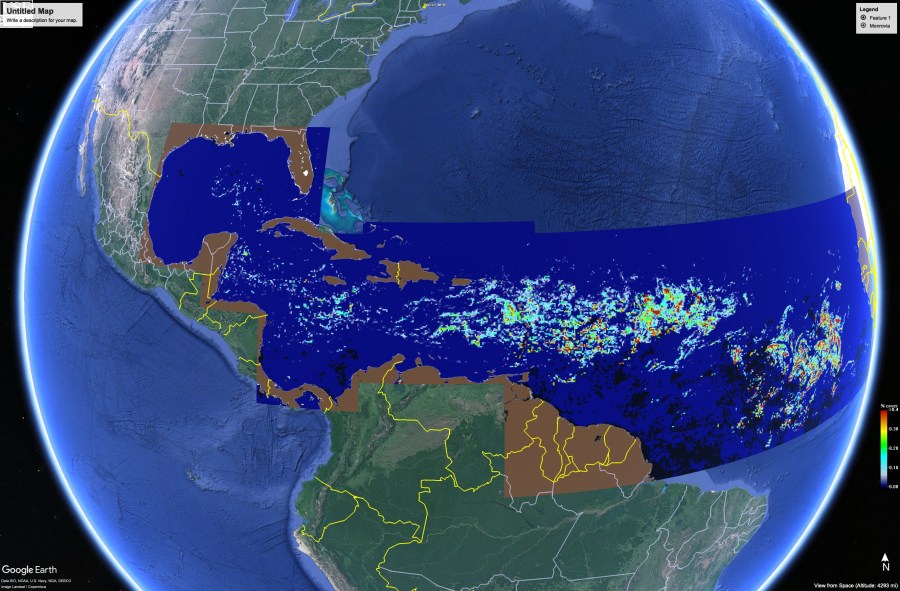Massive seaweed belt still on track to hit US: When will it arrive?
(NEXSTAR) – A giant seaweed belt twice the width of the United States has its sights set on Florida, where it could wreak havoc as it washes ashore.
The 5,000-mile-wide bloom is a belt of sargassum, a floating brown algae that usually floats in the Atlantic. The problems start when it comes on land and starts to rot. As it decays, sargassum lets off hydrogen sulfide and smells like rotten eggs, explains the Florida Department of Health. It can irritate people’s eyes, nose and throat, and trigger breathing issues for people with asthma.
Some sargassum has already started washing up in Florida, the health department said Friday, but the worst is unfortunately still to come. Scientists are closely monitoring satellite imagery to identify areas where beaching may occur.
“The motion, extent, and density of Sargassum is very complex – it grows, sinks, and moves according to ocean currents, winds, and waves,” explained NOAA’s Atlantic Oceanographic & Meteorological Library in an update posted Tuesday.
It’s tricky to predict the exact timing of the seaweed’s movement, but the sargassum is expected to really start washing up in late spring and early summer, said Chuanmin Hu, who tracks the belt as a researcher at USF’s College of Marine Science.
Brian Lapointe, a researcher at Florida Atlantic University’s Harbor Branch Oceanographic Institute, told CNN he believes the activity will peak in July.
When it does start to arrive en masse, the biggest impact will be to the southeast coast of Florida, from Miami to Palm Beach, and the ocean side of the Florida Keys, Hu said. Florida’s western side will be mostly spared, Hu explained.
“Only the portion between Panama City and Mobile Bay may receive some variable amount of seaweed, and this will be later in the year (perhaps May) if it does happen,” Hu told Nexstar.
In the Gulf of Mexico, there are two sources of sargassum, NOAA researchers explain. The first is local blooms, which typically peak in April and May. The second source is in the Caribbean Sea, and usually peaks in late summer.
But this year, there is already quite a bit of sargassum in the Caribbean Sea, and currents are pulling it onto beaches in Florida, Puerto Rico, Cuba and the Yucatan Peninsula of Mexico.
Since 2011, the seaweed’s geographic area has massively expanded. While the sargassum belt is now about 5,000 miles long, it isn’t “a continuous blanket of seaweed,” Hu said. The seaweed is scattered throughout the belt and covers about 0.1% of the ocean’s surface.
But even 0.1% of the ocean’s surface is still a lot of seaweed. The mass can be seen in satellite images taken from space (below).

For beachgoers who observe sargassum washing up on shore, the Florida Department of Health recommends they avoid touching or swimming near the seaweed. The small creatures that live inside it, like jellyfish larvae, could sting or cause your skin to itch.
The department also suggests using gloves if you have to handle sargassum and closing windows if you live near the beach to avoid breathing issues and bad smells.
Copyright 2023 Nexstar Media Inc. All rights reserved. This material may not be published, broadcast, rewritten, or redistributed.





